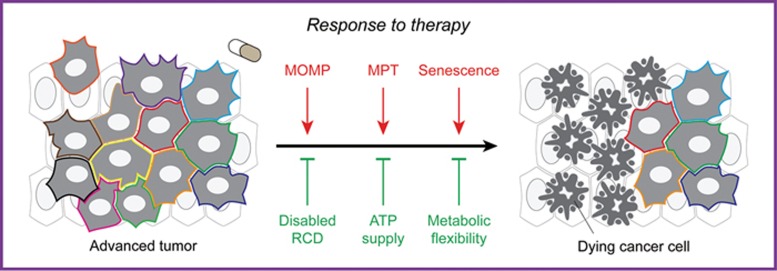Figure 3.
Mitochondrial metabolism in response to treatment. All forms of treatment, including chemotherapy, radiation therapy and immunotherapy, aim at triggering the demise — via regulated cell death (RCD) — or permanent inactivation — via cellular senescence — of malignant cells (directly, or as a consequence of immunological mechanisms). Thus, mitochondria control therapy-driven RCD in cancer cells, implying that alterations in the molecular mechanism underpinning mitochondrial outer membrane permeabilization (MOMP) and mitochondrial permeability transition (MPT) are a major source of resistance. Moreover, mitochondrial ATP fuels several pumps of the ATP-binding cassette family, hence fostering chemoresistance upon the extrusion of xenobiotics from malignant cells. Finally, the ability of malignant cells to flexibly switch between glycolysis and oxidative phosphorylation appears to play a major role in multiple instances of resistance to oncogene inhibition.

